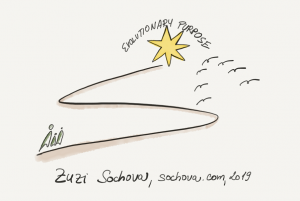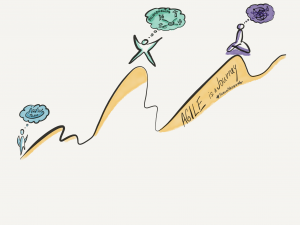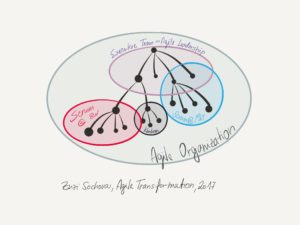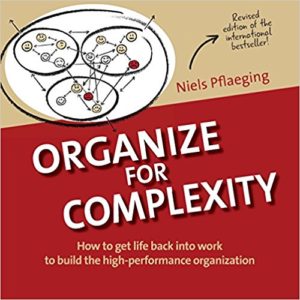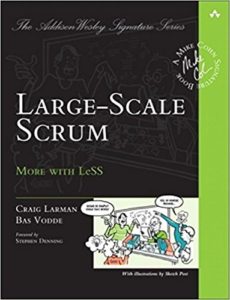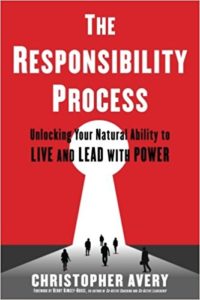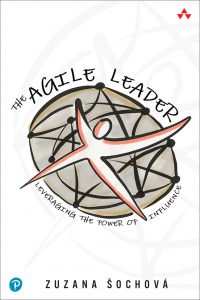Agile HR or if you want Talent Management as it is called nowadays turn the whole company around. It’s employees centric, delivering value to the whole organization. At a glance, not much had changed. We still need to hire people, take care of people growth, do some evaluations. Just the way we work changed significantly. So let’s go one by one to see the shift.
Hiring
Hiring process focuses not that much on skills, because skills could be learned, and will change depending on the business value priorities, and the team needs, but a person who is a good match to the company culture and the team. In an Agile organization people who can learn fast, are the starts. They can go to any cross-functional team and deliver value. We look for someone who has not a fixed mindset, is ready to change. Having said so, people are often not hired by HR and managers but the teams and the HR are only consulting and coaching teams in that process. The world of the fixed positions is over. All the recruiting agencies need to adapt as well. When we’ve been hiring, we involve team members and give them a strong voice in the process. We stopped looking for C++, Java, or C# experts, we were looking for passionate people who have energy, passionate about anything they did. We want to hear stories about what they love to do. Even if it was just a tiny thing they did over the evenings. We were transparent on how the work is going to look like, stressing the downsides, so they have clear expectations. Transparency is the key, so one of the great ideas is to invite candidates to join a team for a day. It’s like going to the date, getting to know each other better, get a sense on both sides how is it going to be.
One example of a very different interview is to ask the candidate to use a creative set of Lego bricks and visualize how it’s going to be once they joined the organization and have a conversation about the model. It’s something you rarely see in the interviews but it shows a lot about the candidates.
Evaluations
Evaluations and performance reviews changed significantly in Agile space. It’s less about reviewing, performance, and evaluation, more about development and vision of the future and growth. As the Agile organization operates internally in very short cycles, where through radical transparency and instant feedback through retrospectives the organization gets to inspect and adapt and solve any issues right away, we don’t really need classical KPIs as they are not supporting the adaptivity and flexibility Agile organizations need and missing a team aspect as well. As a first step, you can start with setting team goals, instead of individual ones. It will help. However, eventually, you need to redesign the whole concept from the scratch. The key focus is on coaching conversations, transparency, and candid feedback from your peers.
One example of a radical change you can use is the team-oriented feedback. You give each person on a team or organization (yes, it scales) a certain amount of money to give away. Let say $100, and ask them to distribute it to the colleagues. The only rule is you can’t keep it. If you think about it, the message you got by receiving $0 it’s much stronger feedback then anything your manager can ever say about your performance. Indeed, we need a lot of coaching to help people understand and handle what’s going on, but in general, that’s a good thing. If you scale this to the whole organization it’s even more fun, as the managers get such instant feedback as well as the employees.
Talent management
As I mentioned at the beginning of this article we are speaking more about talent development then HR. What motivates people? How do we grow talents? How do we support them on their journey? How can we help them to be successful? The answer is coaching, support them to create their own development goals, grow their interest, empower them, raise their awareness about themselves. Not surprising, but how many HR are taking such a support role and how many of the companies take it as process and governance role.
Example of such coaching conversation for the people growth could be using a few categories which are strategic for the organization right now to frame the conversation. Firstly, you need to make people aware of how the coaching scale works, that it’s very different from evaluation, it doesn’t have to grow quarter to quarter and that there is always a better way of doing things, and that this tool shall help them to identify their potential and find ways how they can grow to support the organization. As a next step, you let people rate themselves on a relative scale 1..10, where 1 = not good at this area, and 10 = I’m great at this. They need to be able to compare themselves with the other people around in the organization, explain how it would be, when you are 2 points above the level you are currently, what would be different once you get there, what would it mean to the organization, what is currently in their way, etc. All of those are good coaching questions. No magic. It just works like a magic 🙂


